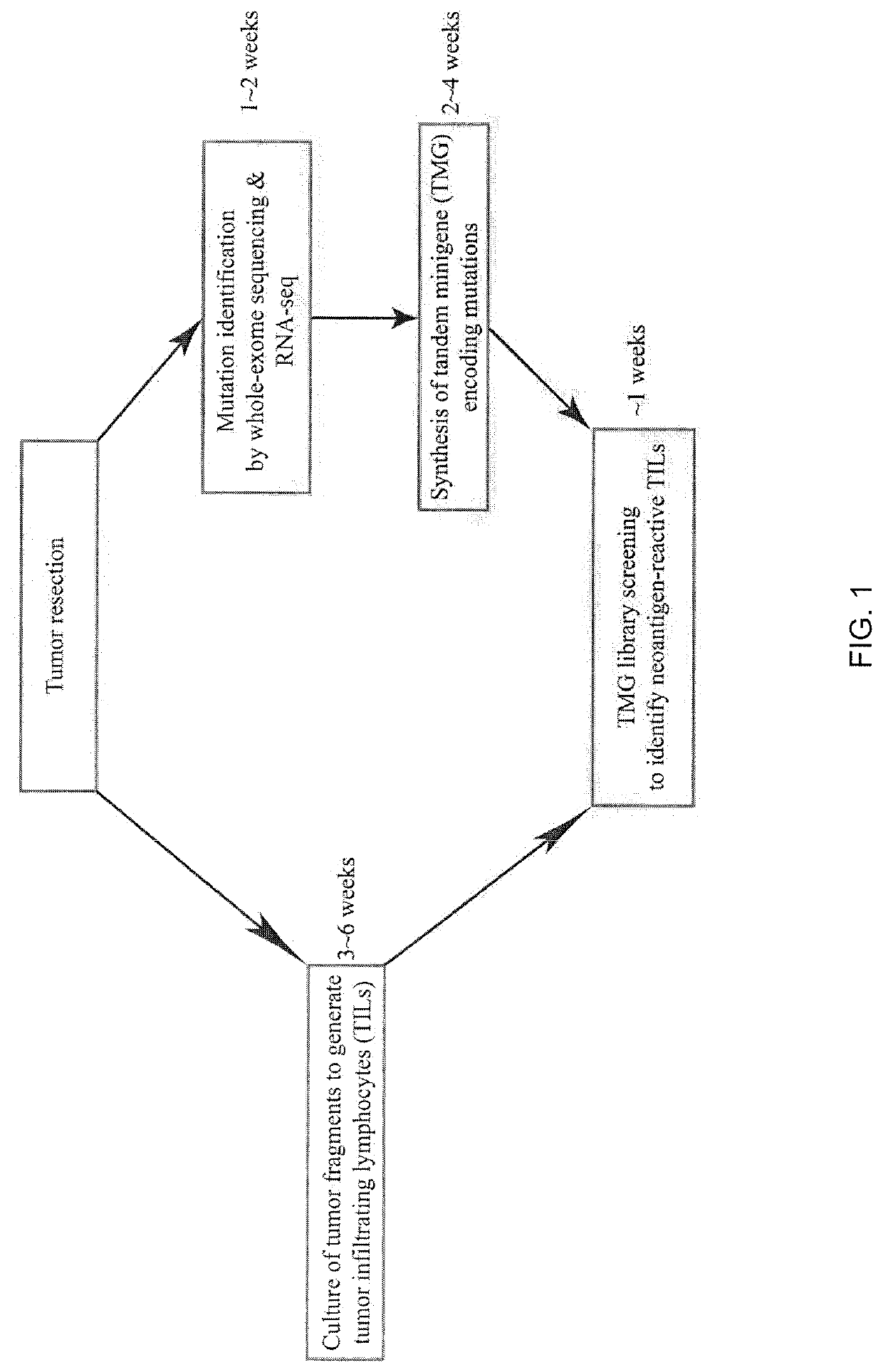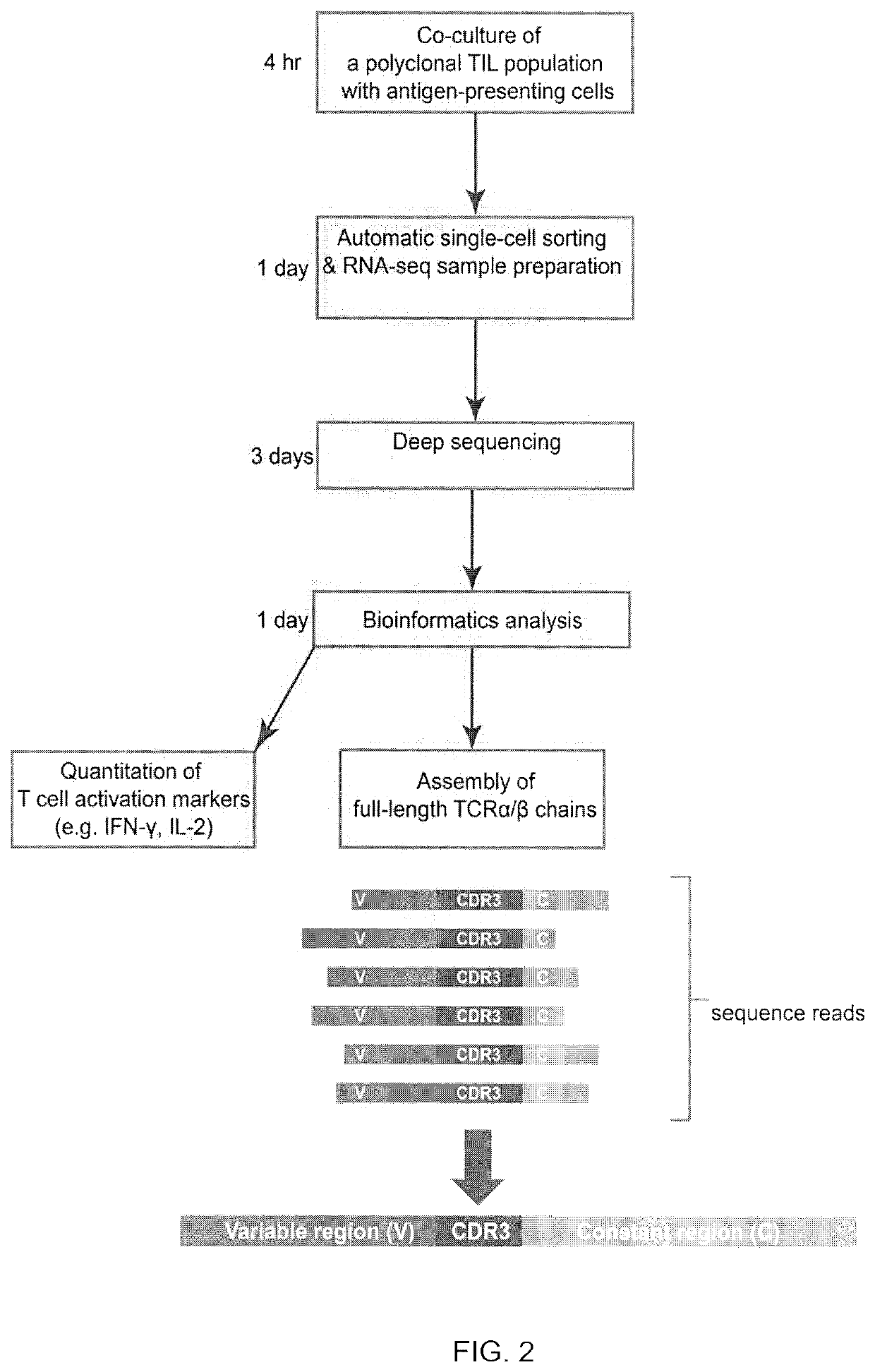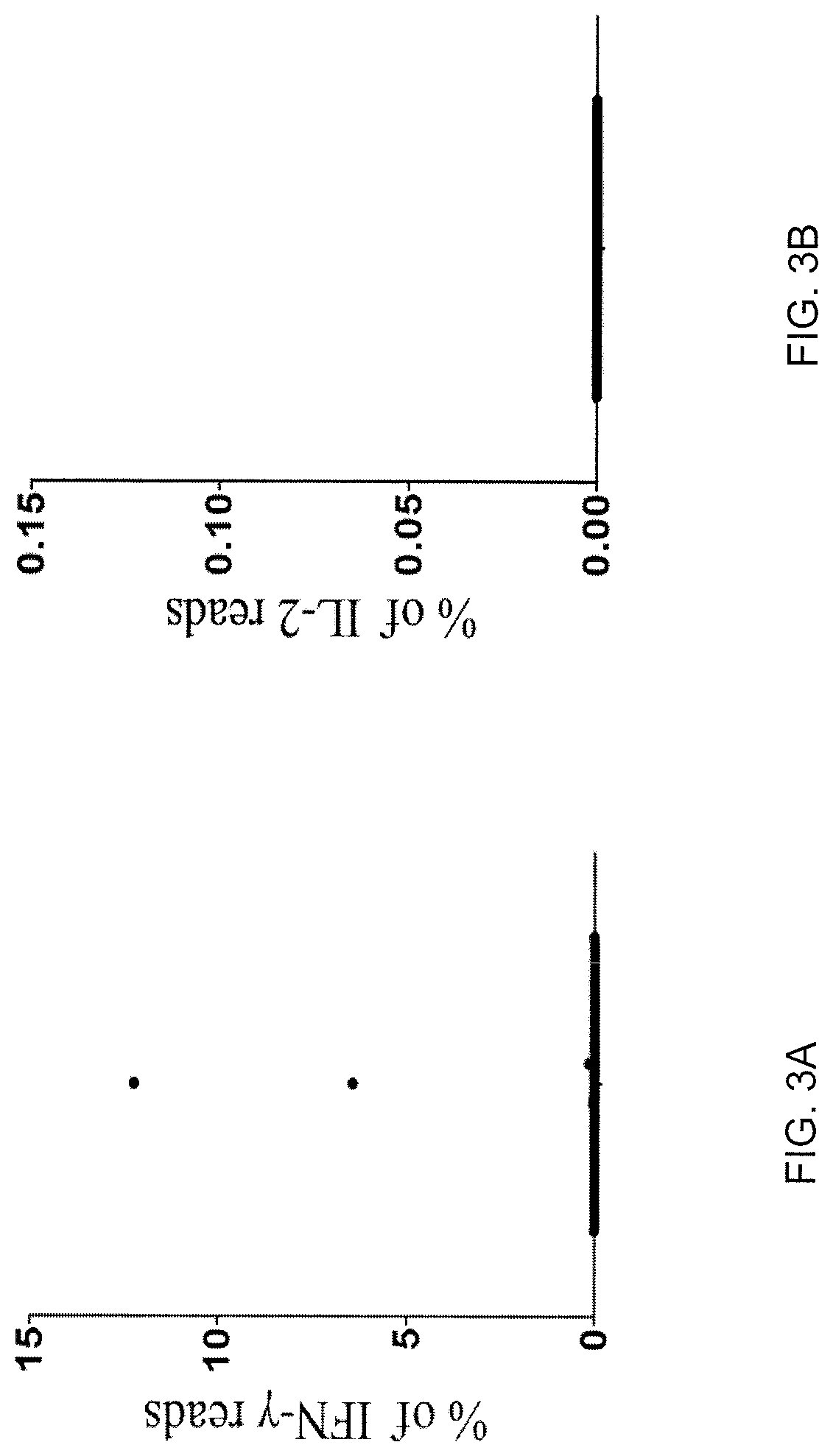Methods of isolating neoantigen-specific t cell receptor sequences
a t cell receptor and neoantigen technology, applied in the field of isolating neoantigen-specific t cell receptor sequences, can solve the problems of difficult identification and/or isolation of tcrs from patients, and obstacles to the successful use of tcr-engineered cells for the widespread treatment of cancer and other diseases
- Summary
- Abstract
- Description
- Claims
- Application Information
AI Technical Summary
Benefits of technology
Problems solved by technology
Method used
Image
Examples
examples 1-5
[0114]The following materials and methods were employed for the experiments described in Examples 1-5.
[0115]Screening of Neoantigen-Reactive TILs
[0116]All patient materials were obtained from National Cancer Institute Institutional Review Board-approved clinical trial (Trial registration ID: NCT01174121). The method of identifying neoantigens and neoantigen-reactive TIL populations has been described in WO 2016 / 053338. Briefly, tumor fragments were excised and cultured in media containing IL-2 (6000 IU / mL) for 3 to 6 weeks (Dudley et al., J. Immunother., 26: 332-342 (2003)). TIL cultures with expanded numbers of cells were screened for the recognition of neoantigens. To screen the expanded TIL cultures for the recognition of neoantigens, nonsynonymous mutations were identified in tumors by whole-exome and RNA sequencing (RNA-seq). Tandem minigene (TMG) libraries encompassing the nonsynonymous mutationswere synthesized. Autologous dendritic cells (DCs) expressing the TMG were screene...
example 1
[0124]This example demonstrates a method of isolating the paired alpha and beta chain sequences of a neoantigen-specific TCR from the TIL 4090 culture.
[0125]TIL 4090 cultures were grown from a metastatic lung lesion resected from a patient with colorectal cancer. One of the cultures, TIL 4090 F7, recognized TMG-5 based on the results of TMG library screening. To isolate the neoantigen-specific TCR, TIL 4090 F7 cells were co-cultured with TMG-5-pulsed autologous DCs for 4 hr and subjected to single-cell RNA-seq analysis. Among all of the sequence reads in the single-cell RNA-seq data, two single cells expressed high percentages of IFN-γ reads (6.42% and 12.25% of the total R1 reads) (FIG. 3A). The rest of the single cells only expressed 0˜0.16% of IFN-γ reads (FIG. 3A). None of the single cells expressed detectable IL-2 using this approach (FIG. 3B). These data suggested that these two T cells specifically reacted to neoantigens presented by DCs. Next, the TCRα / β variable regions and...
example 2
[0126]This example demonstrates that T cells transduced with the TCR alpha and beta chain sequences isolated in Example 1 specifically recognize a neoantigen expressed by the cancer of the patient of Example 1.
[0127]To validate the TCR isolated from TIL 4090 F7, the full-length TCRα and TCRβ sequences with modified mouse constant regions, linked by a furin SGSGP2A linker, were synthesized and cloned into a MSGV8 retroviral expression vector. Peripheral blood T cells were transduced with the 4090 TCR and co-cultured with TMG-5-pulsed 4090 DCs overnight. Based on the secretion of IFN-γ by T cells, 4090 TCR-transduced T cells recognized TMG-5-pulsed DCs, but not DCs pulsed with irrelevant TMG (FIG. 3C).
[0128]Additional experiments were carried out to test the specificity of the 4090 TCR. TMG-5 contained a total of 12 minigenes. 25-mer mutated long-peptides corresponding to each minigene were synthesized and pulsed onto 4090 DCs for 24 hr. After washing, peptide-pulsed DCs were co-cultu...
PUM
| Property | Measurement | Unit |
|---|---|---|
| Fraction | aaaaa | aaaaa |
Abstract
Description
Claims
Application Information
 Login to View More
Login to View More - R&D
- Intellectual Property
- Life Sciences
- Materials
- Tech Scout
- Unparalleled Data Quality
- Higher Quality Content
- 60% Fewer Hallucinations
Browse by: Latest US Patents, China's latest patents, Technical Efficacy Thesaurus, Application Domain, Technology Topic, Popular Technical Reports.
© 2025 PatSnap. All rights reserved.Legal|Privacy policy|Modern Slavery Act Transparency Statement|Sitemap|About US| Contact US: help@patsnap.com



